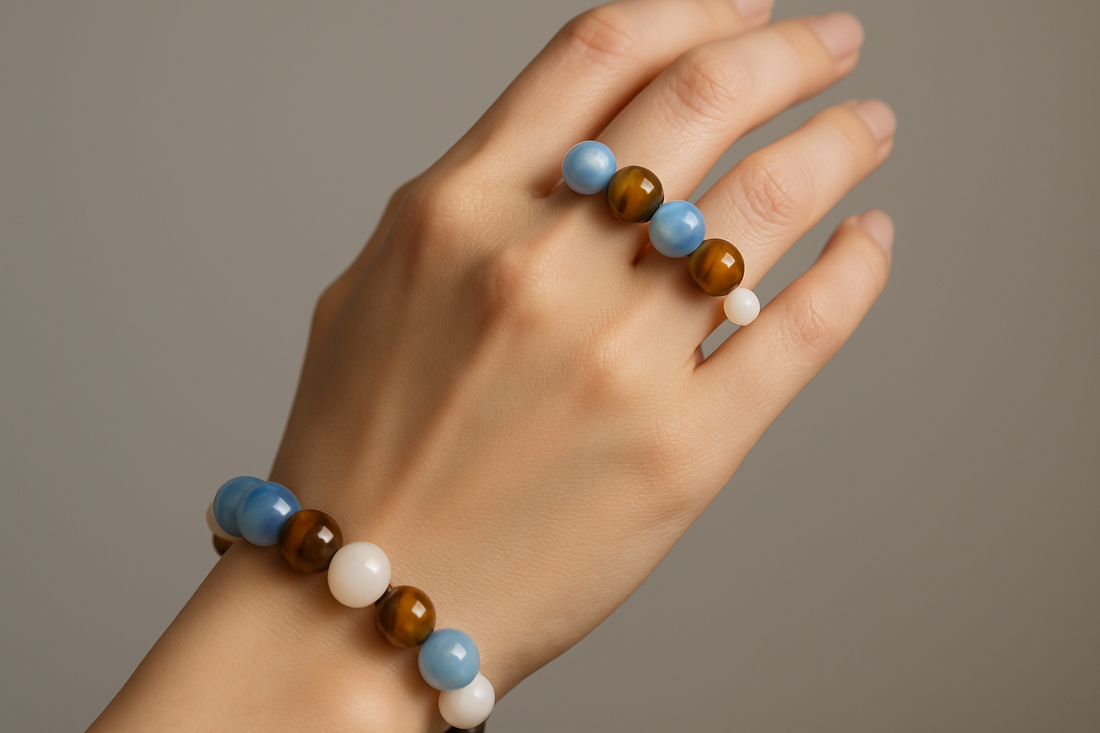
HOW TO RECOGNIZE GENUINE STONES AND CRYSTALS IN YOUR JEWELRY by Maria Nunez
Share
Knowing what you are wearing is also a form of self-love.
Have you ever fallen in love with a piece of jewelry that turned out to be not quite what it seemed? Today I would like to share some simple tips with you so that you can learn to tell the difference between real stones and crystals – and those that only look like them.
In a world full of imitations, natural materials are a beautiful way to connect with something real, down-to-earth, and long-lasting. Let's dive into it together. 💎
🔮 1. Real crystals: The shine comes from within
Some of the jewelry that shines the most beautifully is made with crystals such as:
- Agate : Known for its natural bands and patterns. It can be translucent or more opaque. Feels cool and not quite uniform. If it looks too perfect, it's probably stained glass.
- Quartz (rose quartz, rock crystal, smoky quartz) : Real quartz has small natural irregularities and weighs a bit more. Imitations are often too clear and flawless.

💡 Tip: Natural crystals are never exactly the same. If all stones look identical, it may not be real.
🌿 2. Natural Stone: Every stone has its own soul
Some of the most popular (and loved!) stones in handmade jewelry are:
- Turquoise : Available in shades from blue to green, often with irregular veins. Howlite is often used as an imitation – if the color is very strong, it is probably not real.
- Aquamarine : A soft blue-green stone with a cool feel and calm energy. Imitations are typically either too clear or completely opaque.
- Tiger's Eye : Changes shine when you move it. It's this "cat's eye" effect that makes it so magical. If the light doesn't dance - it might not be tiger's eye.
- Onyx : Deep black, heavy and matte. Simple and elegant. Plastic imitations feel warm and sound hollow if you tap them lightly against each other.

🐚 3. Freshwater Pearls: Beautiful in their imperfection
Real pearls are rarely perfectly round. They have a soft, natural shine and small irregularities that make them unique.

🧪 Quick pearl check: Rub two pearls lightly against each other. Real pearls feel a little rough – imitations glide perfectly smooth.
🔍 4. How to spot a copycat
Three quick signs that a stone may not be real:
- Temperature : Real stone feels cool, even in the summer.
- Weight : Natural materials weigh more than plastic or resin.
- Surface and texture : Look for small marks, veins or natural imperfections.

📌 And remember: If it seems too cheap to be true... it probably is.
🛍️ 5. Trust the real thing – and those who create it
When you buy handmade jewelry from small brands and designers, you don't just get something beautiful - you get knowledge, thoughtfulness and passion. In my jewelry universe, I personally select every stone with love and respect for the material - so you can wear it with pride.

💫 The real has its own value
Real stones and crystals carry history, energy and small imperfections that make them come alive – just like you. If you feel that a stone speaks to you, then it is probably the right one.
Remember: beauty lies not in perfection, but in authenticity. 💖
Become a free member of Blog Followers Club and get 20% off your first purchase (more information).
Become a free member of the Numatik VIP Club and get a 20% discount and free shipping as well as other VIP benefits (more information).
